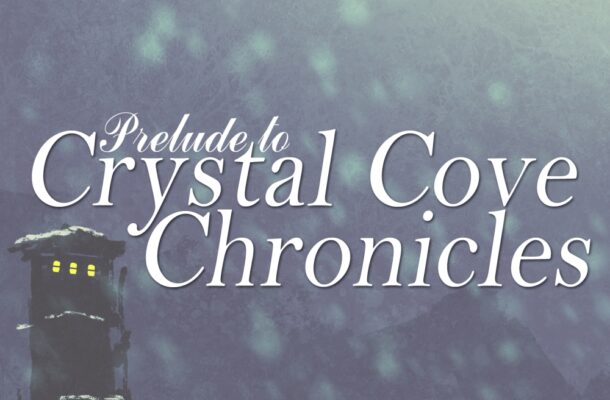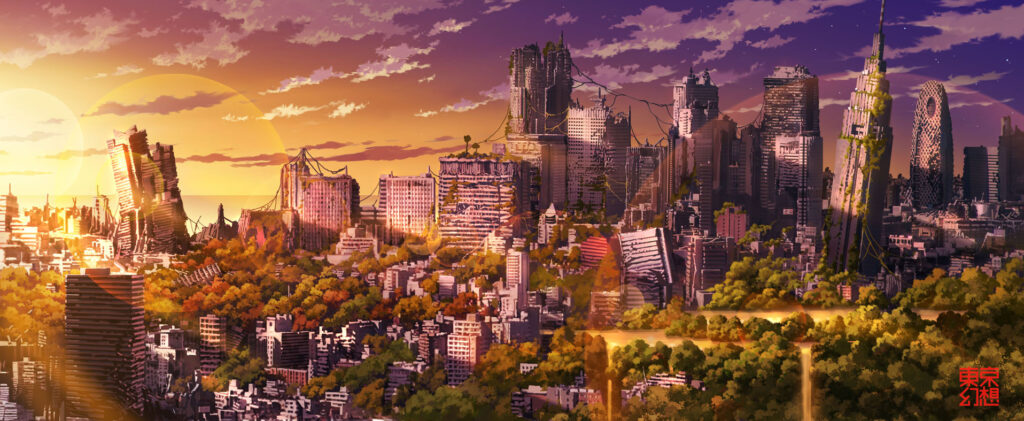
I suppose the best way to kick this chapter off will be to raise my eyebrows in some surprise at the utter desolation of the DC Wasteland. Two-hundred years is an insanely long time, and nature tends to do a pretty god job of cleaning up our mess. Both the desolation and the high levels of radiation all over the place therefore seem a little silly.
Radiation drops off over time as long as the source of said radiation is no longer emitting it (which is the case with nuclear bombs/warheads), and this long after the bombs fell, regardless of the global nature of the exchange, the radiation levels should be pretty well non-existent, barring certain hotspots.
Not to mention that filtering water through mass (such as a huge body of earth) actually removes radiation pretty effectively. Certainly there would’ve been black rain, dust storms, a freezing atmosphere as the sun was blotted out by particulate matter, and all manner of other nastiness right after the war. But we’re looking at two-hundred years here. That’s just not reasonable, no matter how you slice it.
The only major sources of radiation left by now should be things like radioactive dumps (waste barrels, nuclear silos, whatever) and sites like nuclear reactors, which melt down and release their materials slowly over long periods, and would likely still be emitting lethal radiation in the immediate vicinity, creating something like Fallout 4’s Glowing Sea.
Side note: The Glowing Sea is probably the one location in Fallout 4 that actually makes some really good sense. Go southwest to the bottom corner of the map and walk off the western edge so that you’re out of bounds; you’ll find an old reactor there, which is why there’s still radiation in the area). Props, Bethesda, you did something that makes sense… quite possibly by accident, but still.
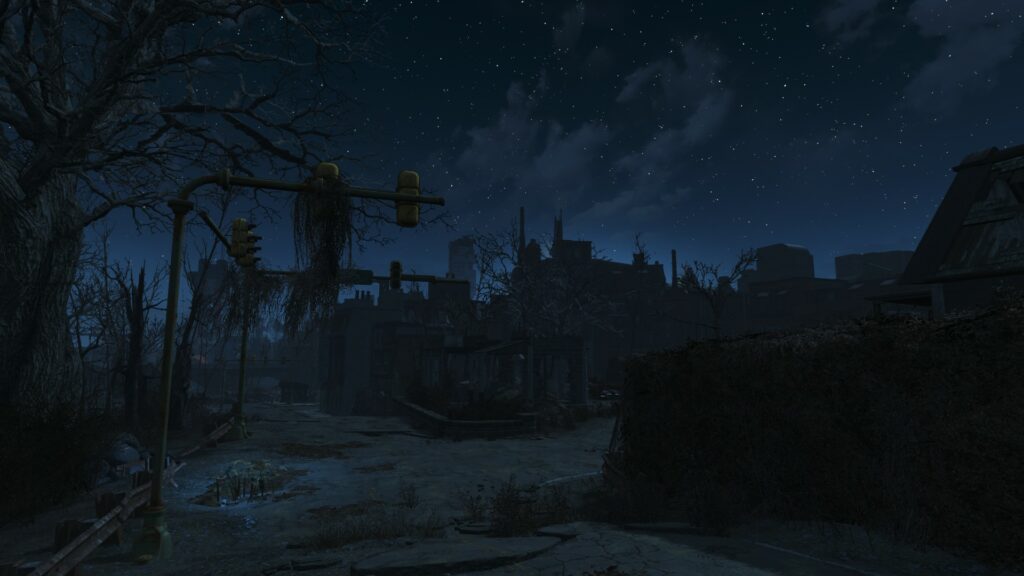
This also could also have made for an interesting gameplay mechanic where wind direction leads to increased hazard; if the wind happens to be blowing material from the reactor in your direction, you could be looking at a steady +10 Rads/s while outdoors until the wind changes. I was pleased to see rad storms in Fallout 4, but they’re still a bit weak-sauce at only 1 Rad/s, with no real variation in strength, and there’s no wind mechanic to blow it around at all. Still a good addition, though.
All in all, we’d end up with a situation like Chernobyl; the surrounding regions are okay, but near the reactor itself is still lethal, and standing downwind isn’t the best plan. Except we don’t have the luxury of building a concrete shield around the reactor, given the world’s gone to hell, so we can expect a larger area surrounding it to be uninhabitable and / or deadly, which is essentially what the Glowing Sea is.
The other effect we should observe with the high rainfall of this region is a huge overgrowth of basically everything. The whole place should effectively be green like the images of Chernobyl linked above, or the opening image at the top of the page (source on Pixiv).
I can take a pretty educated guess as to why Bethesda decided to go with barren: it’s easier and cheaper. Creating a landscape of vivid and lush appearance is actually pretty tricky to do well, and this was way back in the mid-2000s, bearing in mind they’d have been developing it for a good few years before its release in 2008.
And yet… S.T.A.L.K.E.R. managed it just fine, and that released in 2007. As such, my money goes on laziness combined with a misguided belief that post-apoc = desolate desert, probably influenced by how the original games looked while missing the point that those games were west coast, not east. Completely different climate.
I’m pleased to see they do seem to have learned with Fallout 4 (and later, Fallout 76), however. That game’s world is considerably more lush and interesting, with vivid colours and a wide palette including plenty of popping primaries and even some greenery here and there. It’s just a shame they discarded the awesome gothic architecture of the previous games, including their own Fallout 3.
On the other hand, I suppose I can at least give them credit for trying to make the setting theirs with a new design direction, instead of relying 100% on the old aesthetic. Credit where due, they tried something new. I do miss my Gothic Art Deco, though.
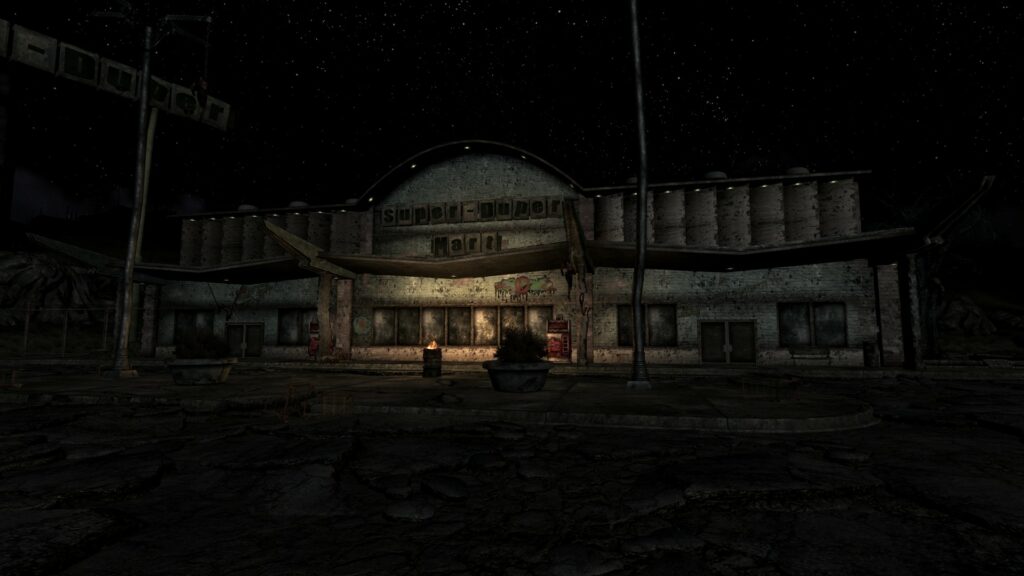
The other major issue with the whole area as it stands is that there are no real signs of civilisation—no trade routes, no major cities, no life. A few random and scattered pockets of pseudo-civilisation make up the sum total of Fallout 3’s world, with four clockwork traders who inexplicably sell only one type of item each. The rest is raiders (and way too many raiders, there’s just no way that’s sustainable in any fashion) and a few minor areas like Big Town, with maybe half a dozen people each.
It’s been two-hundred years and Moira at Megaton is just now thinking it might be nice to publish a book on survival? What the hell have you dimbulbs been doing all this time? Two-hundred years is an Age of Man, give or take a few decades, and these people have supposedly been living entirely on ancient, pre-packaged, pre-war food and irradiated water for that whole period.
Even if we put the above to one side, that length of time would have resulted in some form of civilisation reasserting itself in the area. After all, this is partly what Fallout was meant to be about; how civilisation recovers and survives, the stories of the people who build the future—even when that future is dark, bleak, and hopeless—and you, the player, making decisions that affect those stories. Bethesda, on the other hand, is stuck firmly in the past.
People would have pulled rubble from the ruins of the city, knocked down walls, taken metal and other materials, and used those to form barriers and makeshift walls to protect new settlements. They probably should have been learning how to machine tools, cast concrete, and other useful things, too.
There is at least some evidence of this. If you look at somewhere like Tenpenny Tower there are massive, makeshift concrete and rebar walls surrounding it, and Megaton is more or less entirely built from old planes and junk, so again, credit for that. Though setting up shop in any of the still-standing buildings all around Megaton would’ve been a better plan, so credits removed again, sorry, Bethesda.
Trade routes would also be established, people would get armed and organised, and settlements would vie for power and influence in the region, whether via politics, diplomacy, trade, force of arms—or all of the above.
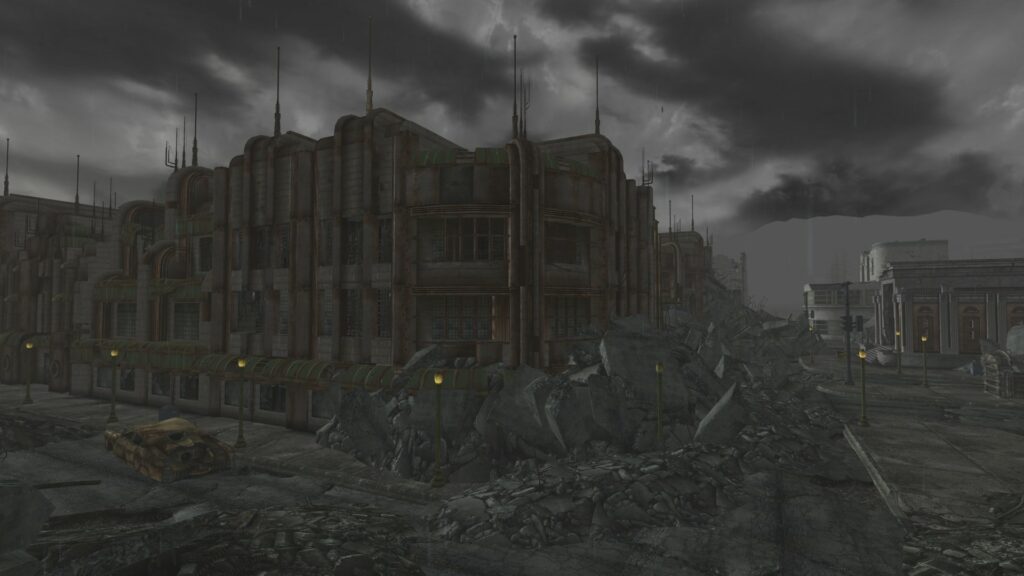
In Fallout 3’s world, though… we get Megaton, Rivet City, and Tenpenny Tower, three locations that make no sense and couldn’t logically work or survive as they stand. Oh, and maybe Canterbury Commons over the east, if you squint and use your imagination to populate it with more than five people.
While there is the single vague caravan system mentioned above, consisting of four people selling four quite-specific types of item, again it wouldn’t work as it currently stands. Just think of all the insanely overpopulated raider / mutant haunts around the wastes; those caravans would be dead in no time at all with only a single guard each, especially when they routinely wander past dangerous locations like the Germantown Police HQ.
One final thing before I move onto the four major population centres (hah… what population?). The very first thing I do when designing a new world is ask myself: What do they eat? It’s more or less the most important part of any new world, because without a reasonably reliable source of food and clean water, things get messy very quickly, and people will die in short order.
(Note: the above video is from a creator who became kind of famous after the whole Mass Effect 3 ending controversy happened, but due to Youtube fuckery the original video is no longer available on MrBTongue’s actual page. The video is therefore a re-post by someone else. Find MrBTongue’s channel HERE, his vids are well worth a watch, even if he hasn’t uploaded anything new in years.)
This is why major cities in the real world tend to be built next to freshwater rivers and important strategic resources (iron and other metals, farmland, large woods / forests, etc.) whenever possible. Ready access to fresh water is absolutely essential to your survival chances, both short and long term.
It’s also why water was used to back the cap currency in Fallout 1 and—to a lesser extent—Fallout 2; it’s vital to human existence and therefore valuable. Control the water, control the world. So at the very least Bethesda did manage to pick up on the idea that water is important.
The problem with this? As I mentioned before, Washington has a huge amount of rainfall compared to California. As such, water would be more widespread, and while it would certainly need to be purified, that’s a lot less of a problem than the sheer scarcity of water in a desert. Water therefore wouldn’t be as valuable in the DC region and you’d need something else to peg the value of your currency to.
A brief aside: notice how Fallout 2 actually had proper currencies? Caps were still used, but not as much, and most areas were heavily based on actual coinage, caps having been superseded by NCR dollars. Though it’s also true that caps were effectively treated as interchangeable, and direct barter of goods remained fairly common, too.
Likewise, New Vegas has several forms of currency, with NCR dollars being substantially devalued due to problems back in their main territories. Because this is what happens when civilisation reasserts itself, people create convenient fiat currencies and rely less on direct barter of goods.
Anyway, let’s take a look at the major settlements in the game. How many of them have any sort of real, functional economy or way of growing / trading food? Precisely one: Rivet City. And the hydroponics bay is largely experimental and small-scale in any case, it wouldn’t suffice for the task of feeding the whole ship’s population. Given time, maybe (though this does raise the question of where they’re getting the water from; hydroponics needs a huge investment of clean water), but time is a big problem when it comes to dying from thirst and starvation.
In the next part I’ll go into a bit more detail on the settlements individually, then we’ll talk about some ideas for new locations to help fill out the world and make it more lived-in.
If you enjoy my work, consider buying me a coffee, or jump onto my newsletter to receive updates, free chapters, stories, and other goodies.


